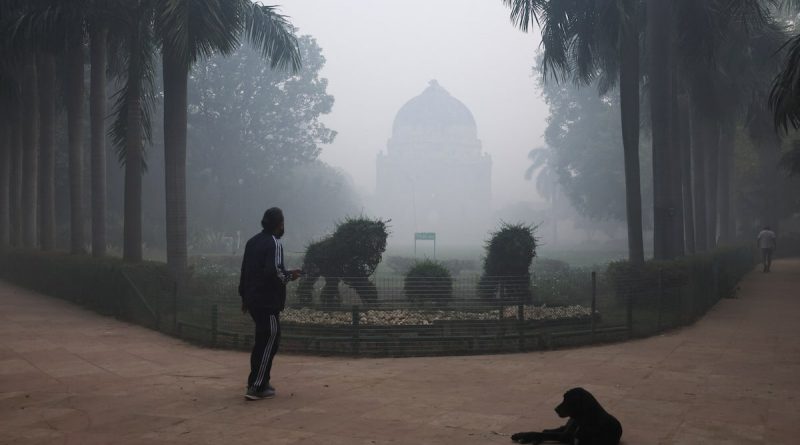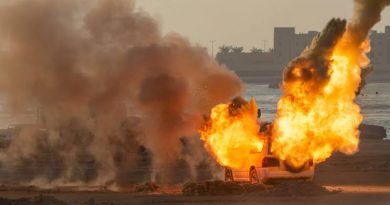Delhi’s Post-Diwali Smog Highlights Urgent Need for Sustainable Celebration and Regional Cooperation
New Delhi — As the vibrant glow of Diwali fades across India’s capital, New Delhi once again finds itself enveloped in a haze — a reminder of the growing need for collective environmental responsibility.
While air quality levels touched “hazardous” ranges, the situation has reignited crucial conversations around sustainable celebration, public health, and regional collaboration to combat air pollution.
This year’s Diwali celebrations, filled with light, laughter, and family gatherings, also witnessed a partial relaxation of the ban on firecrackers by India’s Supreme Court.
The court permitted the use of “green crackers” — designed to emit up to 50% fewer pollutants — for limited hours. Despite reports of crackers being lit beyond the prescribed time, the decision reflects a delicate balance between tradition and sustainability.
A Festival of Light and Awareness
Diwali, known as the Festival of Lights, symbolizes the triumph of light over darkness and good over evil. For many in New Delhi, the celebration brought moments of unity and joy after a challenging year marked by economic and environmental concerns.
Yet, the post-celebration smog underscores the need for translating this symbolic victory into tangible action for a cleaner future.
Environmental experts emphasize that this period should not only be seen as a time of concern but also as an opportunity to deepen awareness about air quality and sustainable practices.
“Festivals like Diwali are deeply rooted in our culture. The goal is not to ban them, but to make them more eco-conscious,” said an environmental activist based in Delhi.
Understanding the Numbers
According to Swiss air quality monitor IQAir, Delhi recorded a PM2.5 concentration of 442 on Tuesday — nearly 59 times higher than the World Health Organization’s safe limit.
The city topped the global list of major polluted urban centers for the day. PM2.5 refers to fine particulate matter that can penetrate deep into the lungs, posing risks of respiratory and cardiac diseases.
The Central Pollution Control Board (CPCB) also reported an Air Quality Index (AQI) of 350, categorizing it as “very poor.” Despite these alarming statistics, the Indian government and local authorities are already implementing mitigation strategies to prevent further deterioration.
The Ministry of Earth Sciences has forecasted that the air quality is likely to remain between “Very Poor” and “Poor” over the next few days but has also outlined proactive plans to manage the situation.
Government Measures and Public Initiatives
Authorities in Delhi have previously demonstrated swift responsiveness to pollution surges. In recent years, emergency measures — such as temporary school closures, restrictions on construction activities, and the odd-even vehicle policy — have been implemented to curb emissions. This year, officials are again ready to activate these plans if needed.
Beyond government intervention, community-driven movements and non-profit organizations are working on long-term solutions. Citizen-led campaigns promoting the use of eco-friendly diyas, LED lights, and biodegradable decorations gained traction this year, reflecting growing environmental consciousness.
The concept of “Green Diwali” — which promotes noise-free, smoke-free, and waste-free celebrations — continues to gain popularity, especially among younger generations. Many families opted for sustainable celebrations, choosing traditional oil lamps over chemical-laden firecrackers, and emphasizing charity and sharing over extravagance.
Regional Collaboration for Cleaner Air
The air quality challenge extends beyond Delhi’s borders. Neighboring regions, including Punjab and Haryana, often experience increased pollution due to seasonal stubble burning — the practice of burning crop residue after harvest.
The Indian government, along with local state administrations, has been promoting alternative methods such as using crop residue for biofuel and compost production.
In Pakistan’s Punjab province, authorities have also declared an environmental emergency, deploying anti-smog guns and initiating action against farm fires and smoke-emitting vehicles. Such regional cooperation, experts say, is essential for addressing transboundary air pollution effectively.
Despite the current haze, Delhi’s residents remain optimistic. The rising visibility of environmental awareness campaigns and the government’s push for clean technology signal a positive shift.
The introduction of electric buses, expansion of green zones, and incentives for renewable energy adoption are helping the city take meaningful strides toward cleaner air.
As the city wakes up under a smoky sky, the message is clear: the spirit of Diwali must evolve. The festival’s essence — light, renewal, and hope — can serve as a guiding force in India’s broader environmental journey.
Delhi’s struggle with air quality is not just a story of pollution, but one of progress, participation, and potential. The steps being taken today — from cleaner technologies to collective responsibility — illuminate a path where the brilliance of Diwali can truly shine without dimming the sky.



